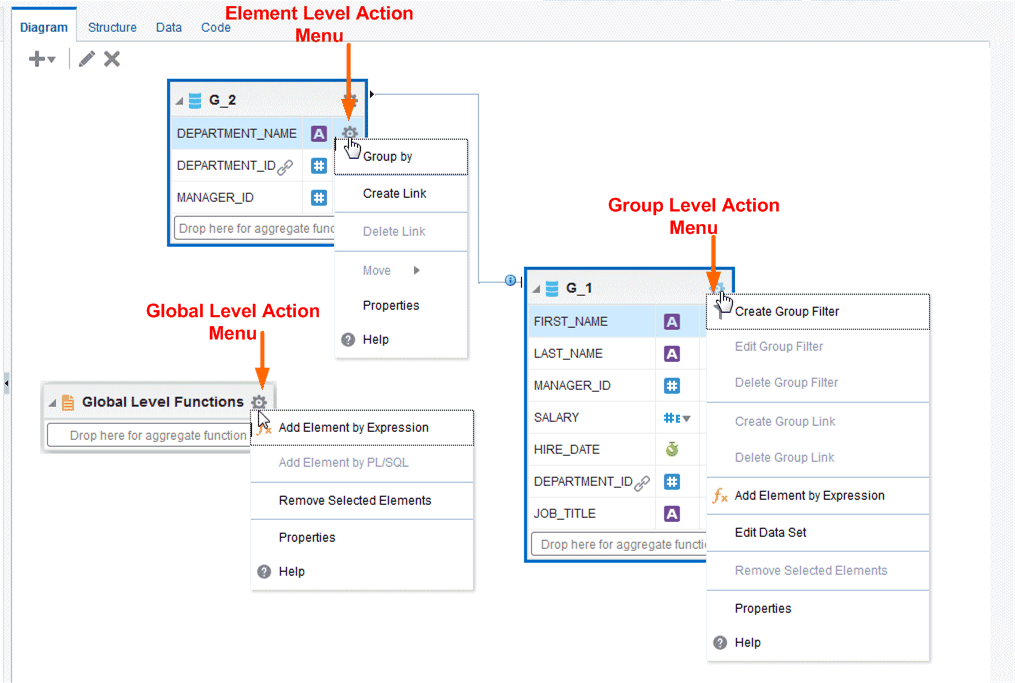Features of the Data Model Editor
The data model editor enables you to combine data from multiple data sets into a single XML data structure.
Data sets from multiple data sources can be merged either as sequential XML or at line-level to create a single combined hierarchical XML. Using the data model editor you can easily combine data from the following data set types: SQL query, OLAP (MDX query), LDAP, and Microsoft Excel.
The data model editor supports the following
-
Group data - Create groups to organize the columns in your report. Groups can do two things: separate a query's data into sets, and filter a query's data.
When you create a query, the data engine creates a group that contains the columns selected by the query; you can create groups to modify the hierarchy of the data appearing in a data model. Groups are used primarily when you want to treat some columns differently than others. For example, you create groups to produce subtotals or create breaks.
-
Link data - Define master-detail links between data sets to group data at multiple levels.
-
Aggregate data - Create group level totals and subtotals.
-
Transform data - Modify source data to conform to business terms and reporting requirements.
-
Create calculations - Compute data values that are required for your report that are not available in the underlying data sources.
The data model editor provides functions at the element level, the group level, and the global level. Note that not all data set types support all functions. See the Important Notes section that accompanies your data set type for limitations. The figure below highlights some of the features and actions available in the data model editor.
